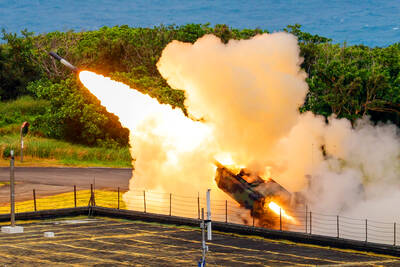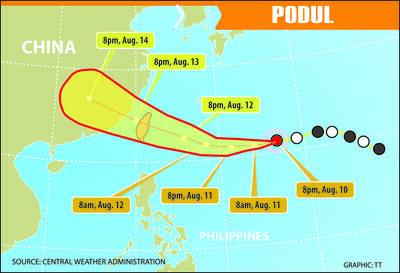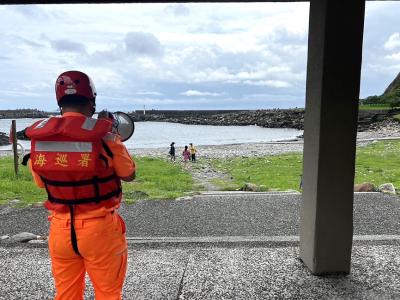The shelves are packed with imported food, but the ersatz prosperity of the newly opened “Gaza Mall” hides the lingering malaise haunting the impoverished territory.
The two-story supermarket in Gaza City opened its doors shortly after Israel partially lifted a four-year blockade of the Hamas-run enclave in June following an international outcry over the deadly seizure of an aid flotilla.
Three months later, it sells everything from Nestle cereals and Galaxy chocolate to blue jeans and toys, nearly everything imported from Israel. Newly released data show the economy is starting to recover.

PHOTO: AFP
But weary factory owners say they are being squeezed out of business by the new imports and more than a third of the Gaza workforce remains unemployed.
“Because of the entry of products from Israel, the West Bank and Jordan after the Freedom Flotilla incident we had to stop one of our production lines,” said Musa Siyam, the owner of the Mecca Cola plant outside Gaza City. “We couldn’t compete on price because there are still raw materials we cannot bring into Gaza ... I had to lay off 20 workers.”
Sunlight slants down from the factory’s high metal walls through a splattering of bullet holes left over from the 2008 to 2009 Gaza war and machines struck by rockets sit unused in the darker corners.
Siyam had already shut down two other production lines because of damage from the war, but kept the factory afloat by bringing in raw materials through smuggling tunnels from Egypt and selling to the besieged local market.
But even with the easing of the blockade, he has not been able to bring in carbon dioxide, forcing him to manufacture his own at much greater expense.
“We can’t compete with them on price ... The prices have fallen so far that we don’t make a profit anymore and sometimes we lose money,” he said.
His experience is shared by other factory owners and in part explains findings by the IMF presented to international donors last week on the sidelines of the UN General Assembly.
It found Gaza’s economy had grown by 16 percent in the first half of the year — from an extremely low base — but that unemployment had held steady at 37 percent, among the highest in the world.
“Producers are still constrained from the input side and the output side,” said Oussama Kanaan, the report’s author, adding that the growth rate would soon wane if further restrictions were not lifted.
Even with the partial easing, Gaza is only importing a fraction of what it was prior to the blockade.
“Raw materials are now 4 percent of 4,000 trucks a month as opposed to 13.5 percent of 10,400 trucks a month,” said Sari Bashi, the head of the Gisha Legal Center, an Israeli group that tracks the closures.
“Other than allowing in Israeli-made consumer products and some raw materials, there has been no change. Export is banned, the movement of people is banned and Israel’s economic warfare is far from over,” she added.
Israeli officials have denied restricting civilian imports and blamed the Western-backed Palestinian Authority for failing to coordinate shipments.
“We have said the crossing is able to handle 250 trucks [per day],” said Major Guy Inbar of the Israeli government’s coordination and liaison office. “They never could get to that number because of problems of coordination.”
The Palestinian Authority — which was driven out of Gaza by Hamas and has been confined to the West Bank since 2007 — has denied such allegations, insisting that Israel makes the final decision on all goods that go in.
Meanwhile, Israel has ruled out any exports as long as there are no Palestinian security forces to inspect shipments, fearing that Hamas — a militant group sworn to its destruction — would smuggle in fighters.
The Abu Dan textile factory in the northern town of Beit Lahiya is a fading vestige of a once-thriving industry that shipped clothes to Israel and further afield before the export lanes were shut.
Before the closures the factory employed up to 150 workers and produced 2,000 to 3,000 pieces per day, all for export to Israel. Now it produces a tenth as much and employs at most 60 or 70 people, mostly temporary help ahead of holidays. There have been no exports since 2006.
The factory is a cavernous void, with vast, empty rooms littered with piles of fabric clippings. In one corner around 25 workers grind away at sewing machines, but the rest of the building is dark and silent.
“The Gaza market is small, and when there are goods coming in from Israel and Egypt it can’t bear much more,” owner Jihad Abu Dan said. “Israel allows everything to enter, but doesn’t allow anything out, so they are really just taking our money.”
After pacing the empty factory he unlocks the administrative offices, now mostly used for storage. The conference room and the general manager’s office look like they were ransacked, and a long reception desk has been taken apart and moved to avoid water seeping down from an upper floor.
“I don’t like to come here,” he says as he locks the door again on the scene of a past life. “It makes me sick.”

DEFENSE: The first set of three NASAMS that were previously purchased is expected to be delivered by the end of this year and deployed near the capital, sources said Taiwan plans to procure 28 more sets of M-142 High Mobility Artillery Rocket Systems (HIMARS), as well as nine additional sets of National Advanced Surface-to-Air Missile Systems (NASAMS), military sources said yesterday. Taiwan had previously purchased 29 HIMARS launchers from the US and received the first 11 last year. Once the planned purchases are completed and delivered, Taiwan would have 57 sets of HIMARS. The army has also increased the number of MGM-140 Army Tactical Missile Systems (ATACMS) purchased from 64 to 84, the sources added. Each HIMARS launch pod can carry six Guided Multiple Launch Rocket Systems, capable of

Authorities have detained three former Taiwan Semiconductor Manufacturing Co (TMSC, 台積電) employees on suspicion of compromising classified technology used in making 2-nanometer chips, the Taiwan High Prosecutors’ Office said yesterday. Prosecutors are holding a former TSMC engineer surnamed Chen (陳) and two recently sacked TSMC engineers, including one person surnamed Wu (吳) in detention with restricted communication, following an investigation launched on July 25, a statement said. The announcement came a day after Nikkei Asia reported on the technology theft in an exclusive story, saying TSMC had fired two workers for contravening data rules on advanced chipmaking technology. Two-nanometer wafers are the most

TRAJECTORY: The severe tropical storm is predicted to be closest to Taiwan on Wednesday and Thursday, and would influence the nation to varying degrees, a forecaster said The Central Weather Administration (CWA) yesterday said it would likely issue a sea warning for Tropical Storm Podul tomorrow morning and a land warning that evening at the earliest. CWA forecaster Lin Ting-yi (林定宜) said the severe tropical storm is predicted to be closest to Taiwan on Wednesday and Thursday. As of 2pm yesterday, the storm was moving west at 21kph and packing sustained winds of 108kph and gusts of up to 136.8kph, the CWA said. Lin said that the tropical storm was about 1,710km east of Oluanpi (鵝鑾鼻), Taiwan’s southernmost tip, with two possible trajectories over the next one

Tropical Storm Podul strengthened into a typhoon at 8pm yesterday, the Central Weather Administration (CWA) said, with a sea warning to be issued late last night or early this morning. As of 8pm, the typhoon was 1,020km east of Oluanpi (鵝鑾鼻), Taiwan’s southernmost tip, moving west at 23kph. The storm carried maximum sustained winds of 119kph and gusts reaching 155kph, the CWA said. Based on the tropical storm’s trajectory, a land warning could be issued any time from midday today, it added. CWA forecaster Chang Chun-yao (張竣堯) said Podul is a fast-moving storm that is forecast to bring its heaviest rainfall and strongest